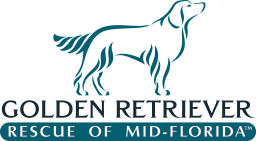How many times a day do you see your dog lick, eat, roll, or swim in questionable substances?
Please remember this information does not replace proper vet care.
Let’s face it: man’s best friend has strange taste, and because UTIs are most commonly caused by bacteria, these habits make them vulnerable to infection.
It’s key to identify your dog’s UTI as early as possible, which is often easier said than done.
Signs your dog may have an UTI
1. More trips outside
If your dog has a UTI, chances are she’ll be pawing at the door more than she usually does.
UTIs give dogs an increased urge to urinate, resulting in more whining, barking, and trips to the backyard.
You might also find yourself refilling the water bowl more often, as dogs with UTIs get more thirsty – which explains the increased urination.
2. Extra stains on the carpet
If your dog has a UTI she might need to go so often that she will stop trying to make it outside.
The urge to urinate will be sudden and uncontrollable … your furry friend will simply opt to unleash on your carpet several times throughout the day.
If your dog is typically well-behaved and suddenly starts peeing in the house, she might have a UTI.
3. Unexplained blood
Blood in your dog’s urine is never a good sign, and this symptom can be especially tricky to detect – unless, of course, the urine is on your favorite white carpet.
I don’t expect you to crawl around your back yard and inspect every puddle, but be on the lookout whenever possible. If you see any signs of blood, it’s time to take action. Note that blood in urine can often look brown, not necessarily red.
Diagnosis and Treatment
Your veterinarian will review your dog’s health history and symptoms and likely will conduct a urinalysis. This typically includes either you or the veterinarian obtaining a urine sample from the dog to be examined for bacterial, crystals, and protein. Once the vet determines the cause, he will usually give the dog a round of antibiotics for 7 to 10 days to clear the infection. Be sure your dog finishes the antibiotics entirely to prevent the infection from recurring, unless otherwise instructed by your veterinarian. It’s recommended that you increase your dog’s water intake, as well, to flush out bacteria during urination. You may need to bring your dog back for a recheck visit so your veterinarian can conduct a second urinalysis to determine if the infection has cleared.
Can UTIs be Prevented?
While not a cure for UTIs, providing more water for your dog can lessen the chance of this infection from starting. Be sure your dog always has plenty of fresh, clean water–change the bowl when you see globs of drool or food floating around. Let your dog outside more often if possible–don’t let him hold it for hours and hours. This can prevent an accident from happening in your home as well! You can also give your dog probiotic supplements to encourage the growth of healthy bacteria. Last, make sure the area around your dog’s urinary opening is clean of any debris, scratches, etc. Most pet stores sell antibacterial wipes, which can be used to clean this area.
Special thanks to the AKC and Dogs Naturally Magazine
